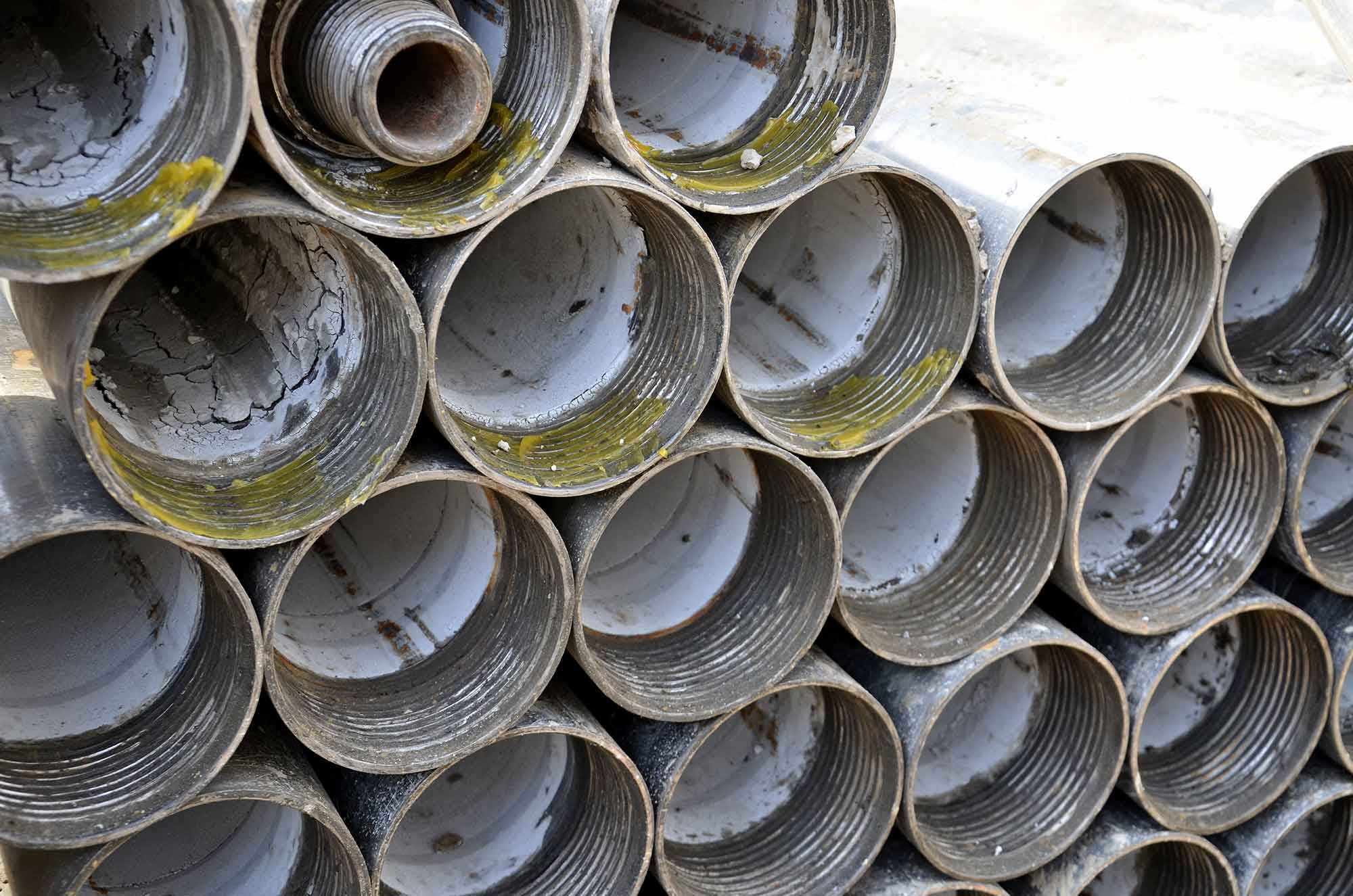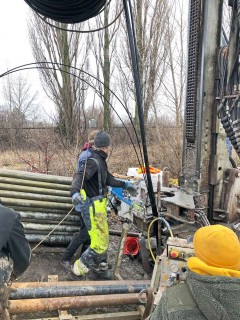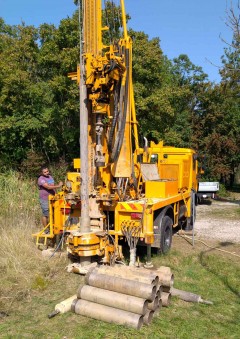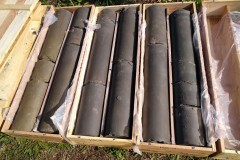In the SANBA project, led by the AIT Austrian Institute of Technology,1 a local low-temperature heating and cooling (LTHC) grid2 was developed for the Martinek military camp in Baden, near Vienna, which was abandoned in 2014. A new urban quarter with residential, commercial and office buildings could be constructed on the 40-hectare site, which is owned by the Ministry of Defence. This will require renovating the listed buildings. The key idea behind the renovation is to supply the district with energy from locally available sources via a local low-temperature network. Near-surface geothermal energy could also be used besides industrial waste heat produced by processes at the nearby NÖM AG dairy as well as photovoltaic and solar thermal energy. The potential and possible restrictions on geothermal drillings and thermal groundwater use at this site were analysed during the research work, focusing on the seasonal storage of the industrial waste heat.
Studying the subsurface
The geoscientific site assessment considered a wide range of existing information, such as geological maps, drilling information, profile sections, existing water rights in the local area, etc. Field and laboratory measurements provided additional data. Two exploratory boreholes (one 150-meter-deep flush-drilled hole and one 30-meter-deep core-drilled hole) were drilled on the land of the nearby dairy and two geoelectrical measurements were carried out on the military camp site. The exploratory drillings are used to record the geological profile, while geoelectrical measurements allow the material, porosity and water saturation of the subsurface to be identified. A dense, fine-grained clayey material typical for the Vienna Basin was found throughout the entire borehole depth. To find out about the thermal properties of the subsurface, a borehole heat exchanger (BHE) was installed and a so-called thermal response test (TRT) was carried out, with which the effective thermal conductivity can be determined. For this purpose, the subsurface is heated evenly using copper wires encased in cables. Installing an extra fibre optic cable allows depth-resolved temperature measurements to be taken in situ. All the information was used to create a 3D model of the subsurface as well as for numerical modelling. Various heat input and extraction scenarios were simulated for a BHE thermal storage system with 96 180-meter probes in order to analyse the thermal impact on the subsurface in the vicinity of the BHE field.
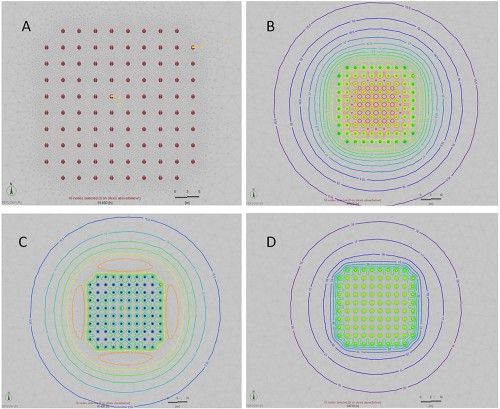
Findings and areas of potential
The tests revealed that the site only contained a shallow and non-productive groundwater in the topmost 10 to 20 meters below the surface and that local inhomogeneities and only a moderate level of hydraulic permeability meant that groundwater reserves could not be thermally used. No restrictions on the geothermal use of the subsurface with borehole heat exchangers were identified down to a planned depth of 150 meters. At deeper layers, a certain formation (Gainfarn Breccia) could potentially be encountered, which might be connected to the local thermal water resources. The measurements done as part of the TRT showed an effective thermal conductivity of around 1.75 W/mK. The average temperature below ground prior to the tests was 13.3°C. The power and energy resources for the BHE field were calculated analytically based on the site-specific parameters. These calculations produced a specific output of 33 W/m and an area-based supply of 93 kWh/m2a for a thermally balanced BHE field. The entire LTHC grid could then be modelled using a specially developed simulation tool. The BHE field model and the calculated energy data, heat pumps, solar thermal energy, PV, battery storage systems and the prosumers from the local network (industry, buildings, etc.) were also integrated into the simulations.integriert.

„Geothermal energy is a cornerstone in the renewable heating transition and a core component of low-temperature heating and cooling grids, particularly for seasonal underground heat storage. In order to fully tap the potential for geothermal energy and ensure the correct dimensioning and design of the geothermal systems, such as borehole heat exchangers, it is essential to have a precise understanding of all the subsurface parameters.“
Edith Haslinger
AIT Austrian Institute of Technology GmbH, Center for Energy
SANBA is a project in the flagship region of the NEFI – New Energy for Industry, an innovative network of research institutes, technology providers and companies for developing key technologies for the decarbonisation of industry. www.nefi.at
1 PROJEKT PARTNERS: AIT AIT Austrian Institute of Technology GmbH (project management), NÖM AG, Vienna University of Technology – Institute for Energy Systems and Thermodynamics, ENFOS. e.U. – Energy and Forest, Research and Services, Institute of Building Research and Innovation ZT-GmbH, City of Baden/Energy Department, University of Leoben – Chair of Energy Network Technology, geohydrotherm GmbH, BauConsult Energy GmbH
Project consultants: The Austrian Ministry of Defence, represented by the Military Real Estate Management Centre (MIMZ), Austrian Federal Monuments Office
2 Local low-temperature heating and cooling (LTHC) grids are pipeline networks that distribute low-temperature water (from 4°C to 30°C) between individual buildings or groups of buildings. The system can be used for heating and cooling using heat pumps as well as for seasonal heat storage. LTHC grids are opening up new opportunities for decentralised energy supply and forming local energy communities.
Share